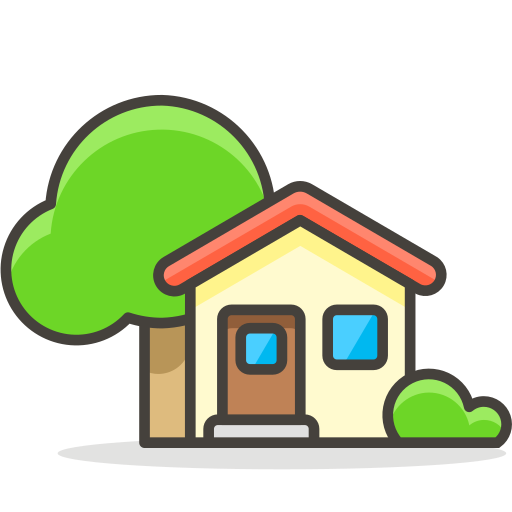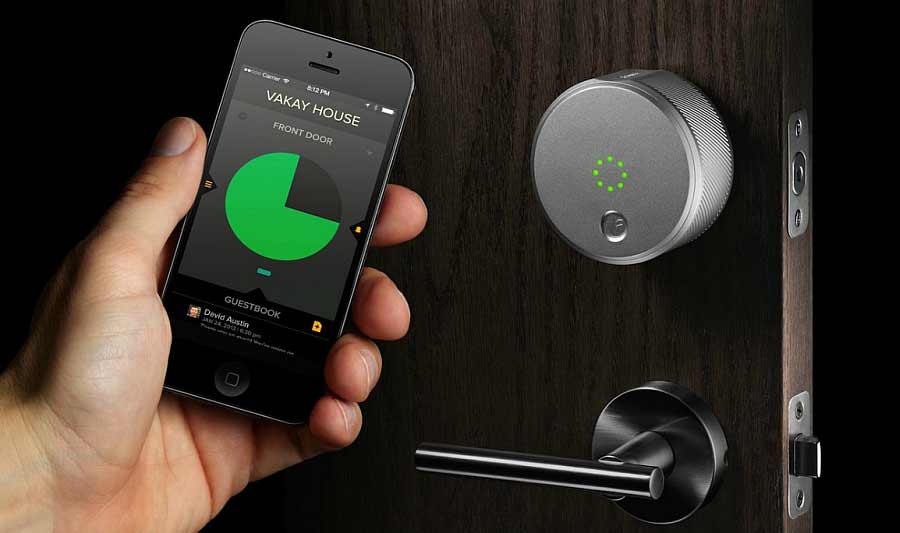Top 10 Smart Home Devices You Need to Automate Everything
In 2025, smart homes are no longer a futuristic dream — they’re the new normal. Whether you’re a tech enthusiast or simply want to make your life easier, smart home devices can transform your living space into a hub of convenience, security, and efficiency. Automating everyday tasks isn’t just about luxury; it’s about saving time, reducing energy consumption, and increasing peace of mind.
If you’re ready to elevate your home and lifestyle, here are the top 10 smart home devices you need to automate everything seamlessly.
1. Smart Voice Assistants: Your Home’s Brain
Smart voice assistants have become the central nervous system of modern smart homes. Leading models like Amazon Echo (Alexa), Google Nest Hub, and Apple HomePod are much more than simple voice-activated gadgets. They connect with hundreds of compatible smart devices, apps, and services, creating a seamless ecosystem controlled by your voice or smartphone.
Features & Benefits:
-
Voice Control: Turn lights on/off, adjust thermostat, play music, and more without lifting a finger.
-
Routines & Automations: Set schedules that trigger multiple devices simultaneously. For example, saying “Good morning” can open blinds, start the coffee maker, and read your calendar.
-
Smart Home Hub: Acts as the control center integrating smart locks, cameras, lighting, and sensors.
-
Multi-room Audio: Play synchronized music throughout your home.
Real-life Use Case:
Imagine walking into your home after a long day, saying “Alexa, I’m home,” and having the lights turn on, the temperature adjust, and your favorite playlist start playing automatically. No hassle, just comfort.
2. Smart Thermostats: Energy Savings Made Easy
Smart thermostats such as Google Nest and Ecobee have revolutionized how we manage home climate control. These devices learn your daily routines and preferences, optimizing temperature settings to reduce unnecessary heating or cooling.
Why Choose Smart Thermostats?
-
Adaptive Learning: Adjusts based on your schedule and even senses when you’re home or away.
-
Remote Access: Control temperature from anywhere using your smartphone.
-
Energy Reports: Provides insights into your energy usage with tips to save more.
-
Integration: Works with HVAC systems and smart vents for zoned temperature control.
Energy Impact:
According to ENERGY STAR, smart thermostats can save up to 30% on heating and cooling bills annually — a substantial return on investment.
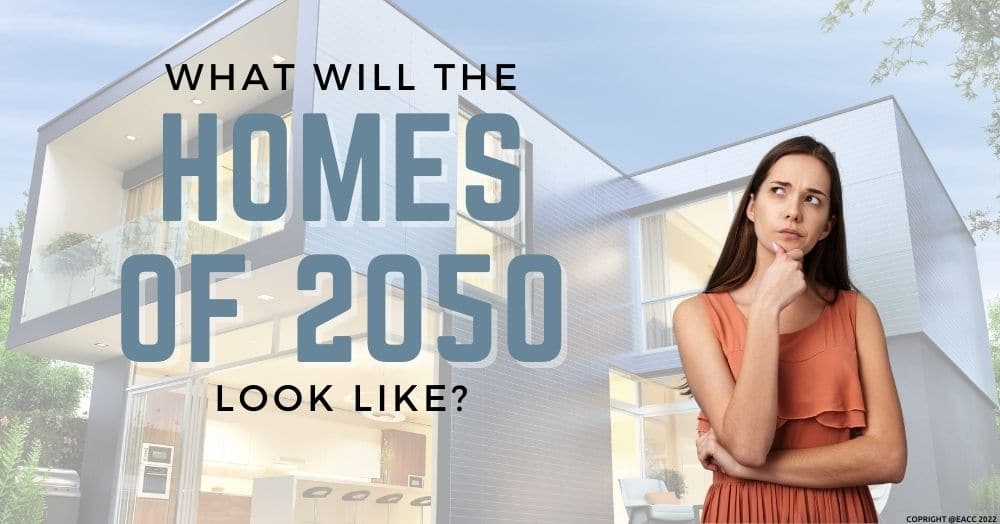
The Smart Kitchen: IoT Devices That Cook, Clean, and Order for You 2050
3. Smart Security Cameras and Video Doorbells
Protecting your home has never been more convenient with smart security cameras and video doorbells. Products like Ring Video Doorbell, Arlo Pro 4, and Google Nest Cam provide constant surveillance accessible in real-time.
Key Features:
-
Motion Detection: Receive instant alerts on your phone when movement is detected.
-
Two-Way Communication: Speak to visitors or delivery personnel remotely.
-
Night Vision: Keeps your home monitored around the clock, even in darkness.
-
Cloud Storage: Save video footage for later review or evidence if needed.
Automation Tip:
Integrate cameras with smart lights to automatically illuminate your yard when motion is detected, deterring potential intruders.
4. Smart Lighting Systems: Set the Mood Automatically
Smart lighting systems like Philips Hue, LIFX, and Nanoleaf offer unmatched customization and automation options for your home’s lighting.
Benefits Include:
-
Color and Brightness Control: Adjust color temperature to match your mood or task.
-
Scheduling: Program lights to simulate sunrise or sunset for natural rhythm alignment.
-
Presence Detection: Automatically turns lights on/off when entering or leaving rooms.
-
Entertainment Sync: Lights that react dynamically to music, movies, or gaming.
Eco-Friendly Angle:
Using LED smart bulbs reduces energy consumption drastically compared to traditional bulbs, making them an eco-conscious choice.
5. Smart Locks: Secure Access with a Tap
Smart locks eliminate the hassle of physical keys, enabling keyless entry via smartphone apps, voice commands, or even biometrics.
What Makes Them Essential?
-
Remote Locking/Unlocking: Check and control your door status from anywhere.
-
Temporary Access: Provide guests or service providers temporary codes or virtual keys.
-
Auto Locking: Doors lock automatically after you leave to prevent accidental unlocks.
-
Integration: Works with security cameras and alarm systems for comprehensive protection.
Practical Use Case:
Grant access to your dog walker or cleaner without physically handing over keys. Receive notifications every time the door is accessed.
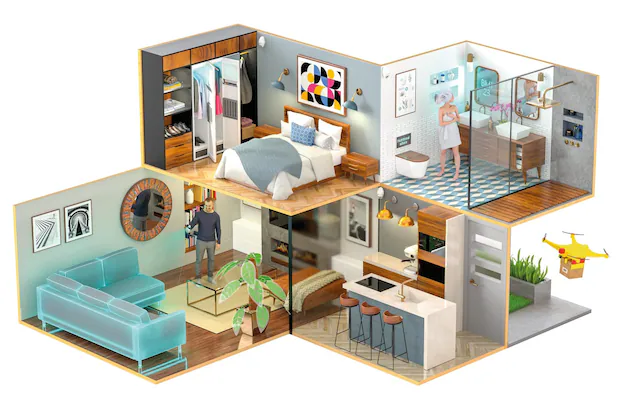
Telegraph-house-IoT Devices Improve
6. Smart Plugs and Outlets: Make Any Device Smart
Smart plugs and outlets like TP-Link Kasa, Wemo Mini, and Amazon Smart Plug turn ordinary appliances into smart devices by controlling their power remotely.
Why They’re a Game-Changer:
-
Easy Installation: No need for rewiring; just plug in the device and connect to Wi-Fi.
-
Energy Monitoring: Track the power usage of connected devices and identify energy hogs.
-
Scheduling: Automate lamps, fans, and appliances to switch on/off on your timetable.
-
Voice Control: Compatible with Alexa, Google Assistant, and Siri.
Tip for Beginners:
Start with a smart plug for your coffee maker to wake up to freshly brewed coffee every morning without lifting a finger.
7. Smart Vacuum Cleaners: Effortless Clean Floors
Robotic vacuum cleaners such as the iRobot Roomba s9+, Roborock S7, and Ecovacs Deebot take the chore of vacuuming off your plate entirely.
What to Expect:
-
Mapping & Navigation: Advanced sensors create a map of your home for efficient cleaning paths.
-
Scheduled Cleaning: Program vacuuming at convenient times or when you’re not home.
-
Automatic Dirt Disposal: Some models empty their dustbin autonomously, reducing maintenance.
-
Integration: Can be controlled by voice or smart home hubs.
Life-Changing Convenience:
Enjoy clean floors every day without thinking about it, perfect for busy families or pet owners.
8. Smart Irrigation Systems: Garden Care Made Simple
Systems like Rachio 3 Smart Sprinkler Controller and Orbit B-hyve use weather data and soil moisture sensors to water your garden intelligently.
Why They’re Worth It:
-
Water Conservation: Adjust watering schedules based on rainfall, temperature, and season.
-
Remote Control: Manage irrigation zones from your phone.
-
Customization: Create schedules specific to different parts of your yard or garden.
-
Integration: Works with smart home assistants for voice control.
Environmental Impact:
Smart irrigation can reduce water usage by up to 50%, saving money and supporting sustainable living.
9. Smart Smoke and Carbon Monoxide Detectors
Safety devices like Nest Protect combine smoke and CO detection with smart technology to enhance home safety.
Advantages:
-
Early Warnings: Receive alerts on your phone no matter where you are.
-
Self-Testing: Devices regularly check their sensors and batteries.
-
Voice Alerts: Announces the type and location of the danger with clear voice warnings.
-
Integration: Can trigger other smart devices, like flashing lights or unlocking smart locks for quick exit.
Safety First:
Smart detectors provide peace of mind knowing your family is protected, even when you’re away.
10. Smart Hubs and Controllers: The Ultimate Integration
Smart hubs like Samsung SmartThings, Hubitat Elevation, and Apple HomeKit unify your smart devices into one easy-to-manage system.
What They Do:
-
Device Compatibility: Connect Zigbee, Z-Wave, and Wi-Fi devices across brands.
-
Automation Rules: Set complex scenarios — e.g., if your door opens after 8 PM, turn on entry lights and start camera recording.
-
Centralized Control: Manage all devices via one app or voice assistant.
-
Custom Scenes: Create personalized settings for different activities or moods.
Why You Need One:
If your smart home grows, a hub prevents device fragmentation and ensures smooth, reliable automation.

Smart-Home-Threats-and-Countermeasures
Summary Table: Features Comparison of Top Smart Devices
| Device Type | Popular Brands | Key Feature | Benefits | Approx. Price (USD) |
|---|---|---|---|---|
| Voice Assistant | Amazon Echo, Google Nest | Voice control & routines | Hands-free control & integration | $50 – $250 |
| Smart Thermostat | Nest, Ecobee | Adaptive temperature control | Energy savings & remote access | $120 – $250 |
| Security Cameras | Ring, Arlo, Nest Cam | Real-time video & alerts | Enhanced home security | $100 – $300 |
| Smart Lighting | Philips Hue, LIFX | Color & schedule control | Ambiance & energy efficiency | $20 – $70 per bulb |
| Smart Locks | August, Schlage | Keyless entry & remote access | Security & convenience | $150 – $300 |
| Smart Plugs | TP-Link Kasa, Wemo | Remote appliance control | Easy upgrade for regular devices | $20 – $40 |
| Robotic Vacuum Cleaners | iRobot Roomba, Roborock | Automated cleaning | Time-saving & cleanliness | $300 – $1000 |
| Smart Irrigation Systems | Rachio, Orbit B-hyve | Weather-based watering | Water savings & garden health | $150 – $300 |
| Smoke & CO Detectors | Nest Protect | Smart alerts & self-testing | Enhanced safety & remote warnings | $100 – $130 |
| Smart Hubs | SmartThings, Hubitat | Centralized device control | Smooth automation & integration | $80 – $150 |
Setting Up Your Smart Home Brain, Climate Control & Security Cameras
1. Setting Up Your Smart Voice Assistant (Amazon Echo / Google Nest / Apple HomePod)
Unboxing & Physical Setup
-
Remove the device from packaging.
-
Plug it into a power outlet near your usual living space.
-
Wait for the indicator light to show it’s powered on and ready.
Connect to Wi-Fi and App Setup
-
Download the corresponding app:
-
Amazon Alexa app (for Echo)
-
Google Home app (for Nest)
-
Apple Home app (for HomePod)
-
-
Open the app, create or log in to your account.
-
Follow in-app prompts to add a new device.
-
Connect the device to your home Wi-Fi network by selecting your network and entering the password.
-
Complete voice training if prompted (helps assistant recognize your voice better).
Basic Configuration
-
Set your preferred language and location.
-
Create routines for daily tasks:
-
Example: “Good morning” triggers lights on, news briefing, and coffee machine start.
-
-
Link compatible smart devices inside the app.
Advanced Tips
-
Enable “multi-room audio” to play music throughout your home.
-
Use voice profiles for personalized responses.
-
Connect streaming services (Spotify, Apple Music) within the app.
Troubleshooting
-
Restart the device if it won’t connect.
-
Ensure your phone is on the same Wi-Fi network during setup.
-
Factory reset by holding down the device button if persistent issues occur.
2. Setting Up Your Smart Thermostat (Google Nest / Ecobee)
Unboxing & Physical Installation
-
Turn off your HVAC system at the breaker for safety.
-
Remove your existing thermostat by detaching the wall plate and wiring.
-
Label each wire with the provided stickers for easy reconnection.
-
Mount the new thermostat base on the wall using screws and anchors.
-
Connect wires according to the installation guide (match labels).
-
Attach the thermostat display and turn the power back on.
Note: If unsure, consult a professional electrician or HVAC technician.
Connect to Wi-Fi and App Setup
-
Download the Nest or Ecobee app.
-
Create/log into your account.
-
Follow in-app prompts to connect the thermostat to your Wi-Fi.
-
Allow the device to update its firmware if necessary.
Basic Configuration
-
Set your preferred temperature schedule manually or let the device learn your routine.
-
Input details about your home size and HVAC system for optimization.
-
Enable geofencing to detect when you leave or arrive and adjust temperature accordingly.
Advanced Tips
-
Use voice commands via your smart assistant to change temperature.
-
Integrate with smart vents if available for room-by-room control.
-
Review energy usage reports in the app to optimize settings.
Troubleshooting
-
Double-check wiring if thermostat doesn’t power on.
-
Reset Wi-Fi if connection drops.
-
Contact support for HVAC compatibility questions.
3. Setting Up Smart Security Cameras and Video Doorbells (Ring / Arlo / Nest Cam)
Unboxing & Physical Installation
-
Charge the battery if the device is battery-powered or plug in if wired.
-
Decide on mounting location:
-
Doorbells: near front door at chest height.
-
Cameras: corners with wide field of view, sheltered from weather.
-
-
Use mounting bracket and screws provided.
-
For wired models, connect to existing doorbell wiring or power source.
Connect to Wi-Fi and App Setup
-
Download the specific app (Ring, Arlo, Nest).
-
Create or log in to your account.
-
Add a new device and follow on-screen instructions to connect to Wi-Fi.
-
Allow firmware updates if prompted.
Basic Configuration
-
Adjust camera angle and field of view.
-
Set motion detection zones to focus on important areas.
-
Enable notifications to receive instant alerts on your phone.
-
Test two-way audio by speaking through the app.
Advanced Tips
-
Link cameras to your smart assistant for voice commands (e.g., “Show me the front door”).
-
Integrate with smart lights for motion-triggered illumination.
-
Use cloud storage subscription for video recording and playback.
Troubleshooting
-
Check Wi-Fi signal strength; use a Wi-Fi extender if needed.
-
Restart camera or app if video feed freezes.
-
Reinstall app or reset camera to factory settings for persistent issues.
Lighting, Locks, and Power Control Made Simple
4. Setting Up Your Smart Lighting System (Philips Hue / LIFX / Sengled)
Unboxing & Physical Setup
-
Unbox smart bulbs or light strips.
-
Screw bulbs into your existing light sockets or install light strips as instructed.
-
Power on the light fixture.
Connect to Hub or Direct Wi-Fi
-
For Philips Hue, set up the Hue Bridge by connecting it to your router via Ethernet and powering it on.
-
For LIFX and many others, bulbs connect directly to Wi-Fi—no hub needed.
App Setup
-
Download the relevant app (Philips Hue, LIFX, Sengled).
-
Create or log in to your account.
-
Add new lights by following the app’s prompts (usually involves scanning or selecting devices).
-
Assign lights to rooms or zones for easier control.
Basic Configuration
-
Customize brightness, colors, and schedules.
-
Create lighting scenes (e.g., “Movie Night” dims lights to 30% warm white).
-
Enable geofencing to automatically turn lights on/off when you arrive/leave home.
Advanced Tips
-
Integrate with voice assistants to control lights by voice.
-
Use motion sensors to automate lighting in hallways or closets.
-
Sync lights with music or TV for immersive effects.
Troubleshooting
-
Ensure bulbs are on and within Wi-Fi or hub range.
-
Restart the app or device if the light isn’t responding.
-
Reset bulbs by toggling power a set number of times (check brand instructions).
5. Setting Up Your Smart Lock (August / Schlage Encode / Yale)
Unboxing & Physical Installation
-
Remove existing deadbolt lock.
-
Install the smart lock hardware following the manufacturer’s instructions.
-
Ensure battery is inserted and charged if applicable.
-
Test the mechanical lock manually before proceeding.
Connect to Wi-Fi or Hub
-
Some smart locks connect directly to Wi-Fi; others use a hub (like August Connect).
-
Ensure the hub or lock is powered and connected.
App Setup
-
Download the lock’s app (August Home, Schlage Home, Yale Secure).
-
Create or log into your account.
-
Add your lock device following app prompts.
-
Set up user codes for family, guests, or service providers.
Basic Configuration
-
Enable auto-lock and unlock based on proximity.
-
Set temporary or scheduled access codes for visitors.
-
Receive notifications on lock activity.
Advanced Tips
-
Integrate with smart doorbells or cameras for enhanced security.
-
Use voice assistants to lock/unlock via voice command.
-
Link with home security systems for alerts and remote control.
Troubleshooting
-
Replace batteries regularly to avoid lockouts.
-
Recalibrate lock if it jams or doesn’t lock smoothly.
-
Reset device and re-pair if app loses connection.
6. Setting Up Smart Plugs and Outlets (TP-Link Kasa / Wemo / Amazon Smart Plug)
Unboxing & Physical Setup
-
Plug the smart plug into a power outlet.
-
Plug your device (lamp, fan, coffee maker) into the smart plug.
Connect to Wi-Fi and App Setup
-
Download the corresponding app (Kasa, Wemo, Alexa).
-
Log in or create an account.
-
Add new smart plug device by following on-screen instructions.
-
Connect the plug to your Wi-Fi network (usually 2.4 GHz).
Basic Configuration
-
Rename the plug for easy voice commands (“Living room lamp”).
-
Set schedules or timers to automate on/off cycles.
-
Enable away mode to simulate presence when you’re not home.
Advanced Tips
-
Group plugs together to control multiple devices at once.
-
Use voice commands with your smart assistant.
-
Monitor energy usage for plugged devices via app.
Troubleshooting
-
Make sure the plug is within Wi-Fi range.
-
Restart the plug and app if device isn’t responsive.
-
Reset the plug by holding the power button for 5-10 seconds.
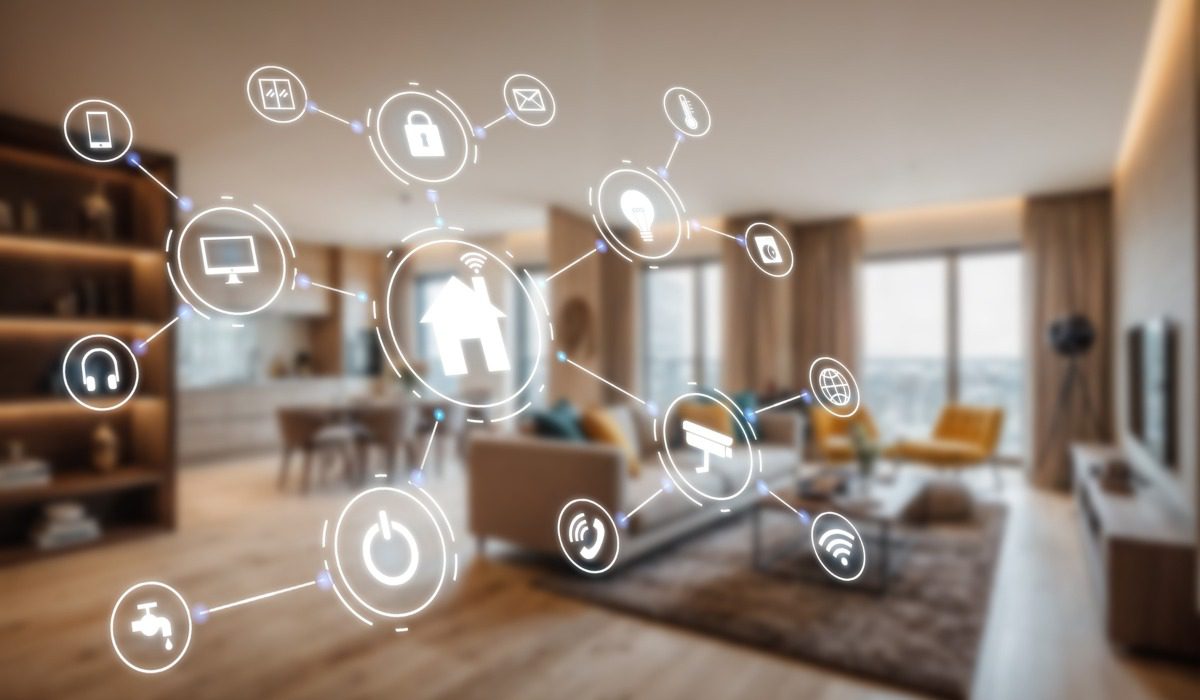
Latest-smart-home-trends-that-define-futurtistic-way-of-living-f
Final Thoughts: Why Smart Home Automation Matters in 2025
Investing in these smart devices not only boosts convenience but also promotes safety, energy efficiency, and better quality of life. Automation frees you from mundane chores and empowers you with control over your home — anytime, anywhere.
With rapid advances and more affordable options, there’s never been a better time to create your fully automated smart home.
FAQ
Q: How difficult is it to set up smart home devices?
A: Most smart devices are designed for easy installation and user-friendly apps. Voice assistants guide you step-by-step.
Q: Are smart home devices secure?
A: Yes, reputable brands use encryption and regular updates to protect your privacy. Always keep firmware updated.
Q: Can I mix devices from different brands?
A: Absolutely! Many devices support common standards like Zigbee, Z-Wave, or Wi-Fi, and hubs can unify diverse products.
Useful Resources
Watch This Video to See Smart Home Automation in Action
